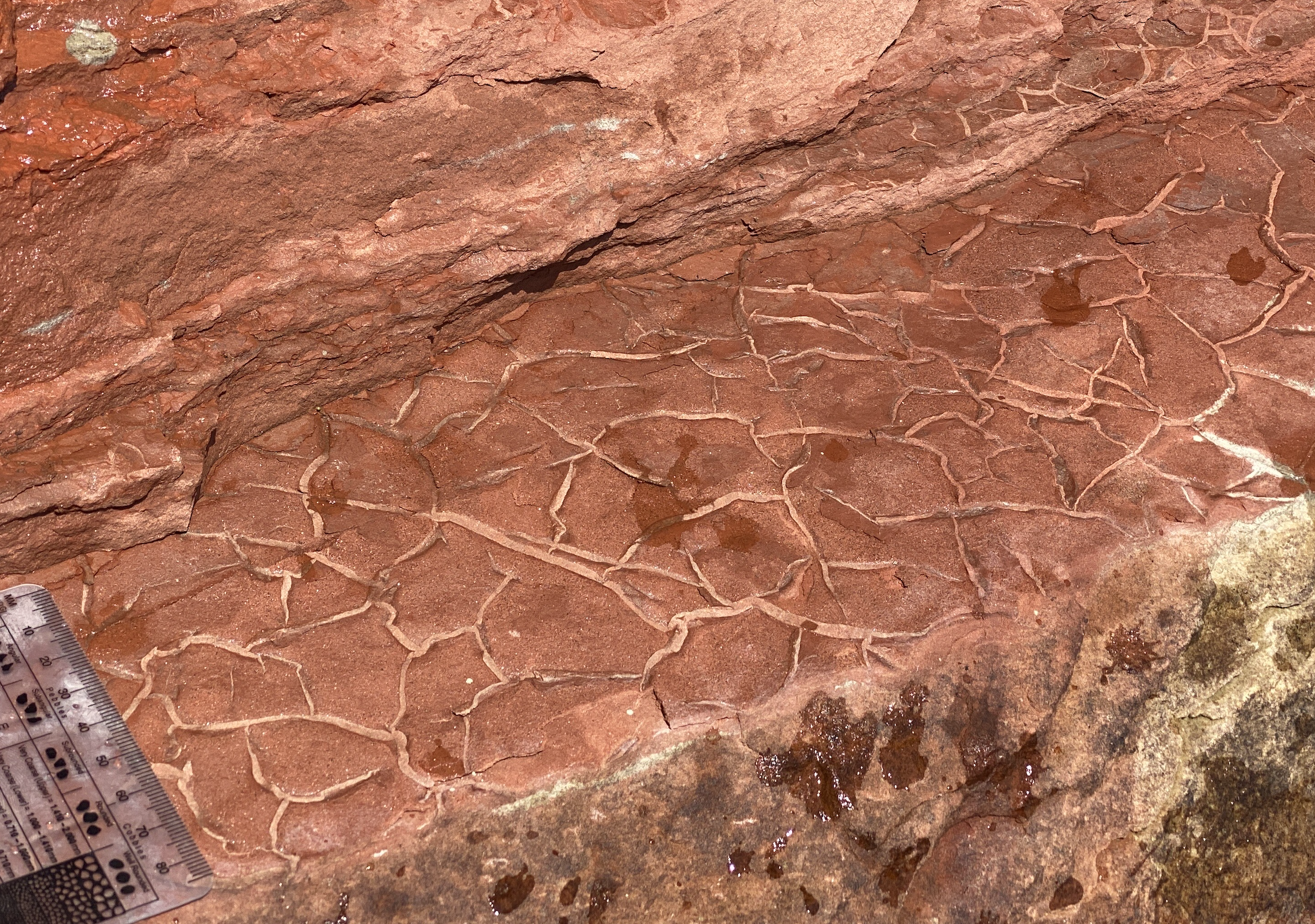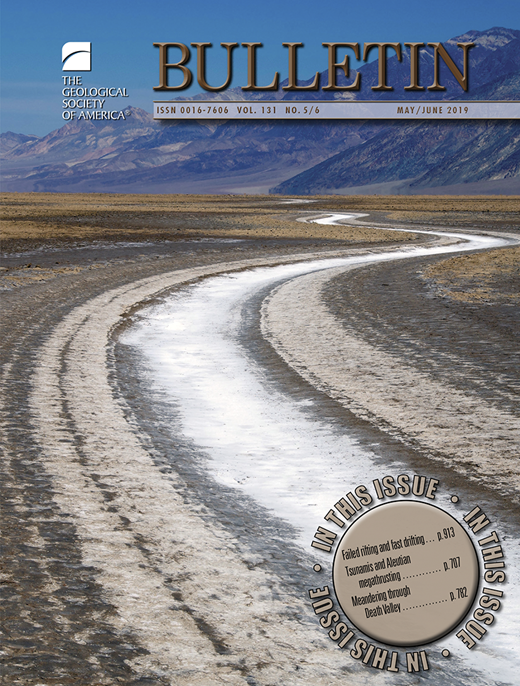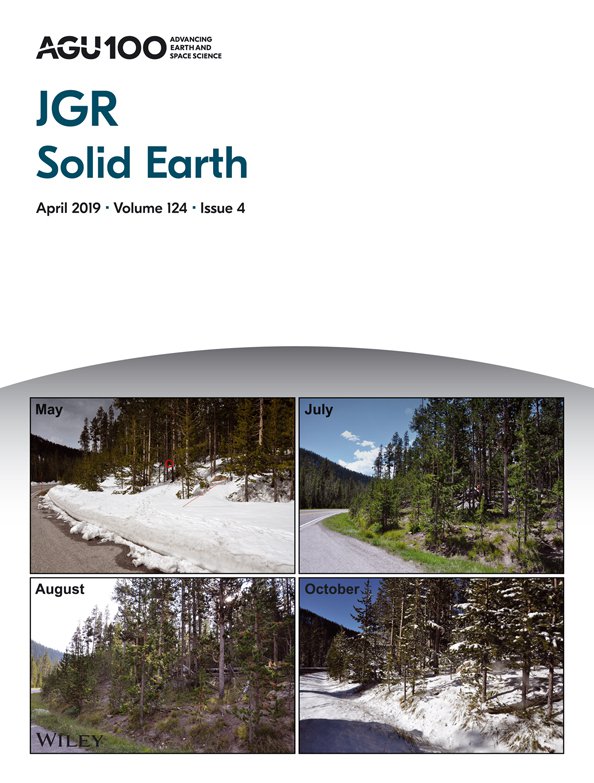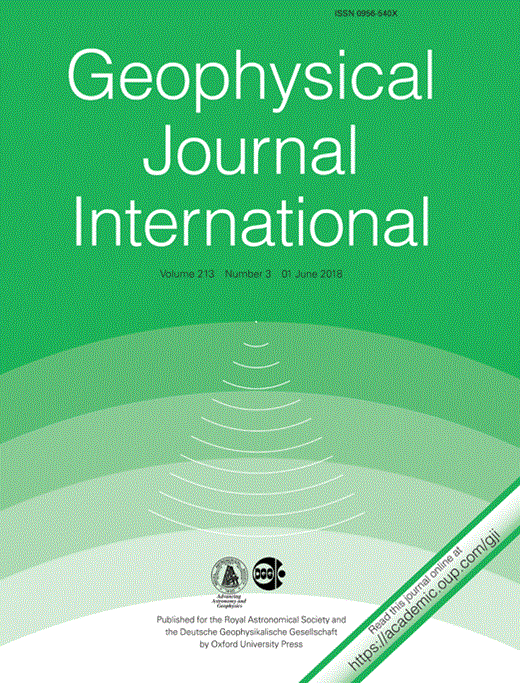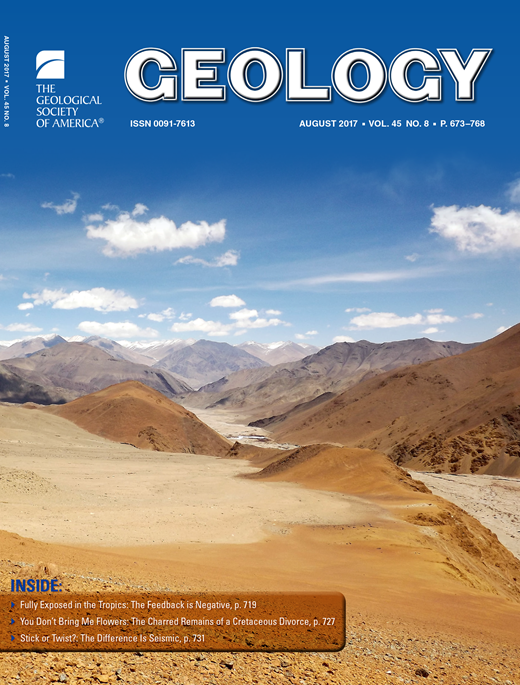
Jon Husson stands next to a cross-section through a stromatolitic bioherm in the carbonate-dominated Love's Creek Member of the Bitter Springs Formation (central Australia)

This photo shows a cross-sectional view of a stromatolitic bioherm with a diameter of ∼5 meters with Princeton graduate student Jon Husson for scale. Stratigraphic up is ∼45° up and to the left of the image as can be seen in this annotated version of the photo. Stromatolites are laminated accumulations of carbonate sediment that were produced by growth and metabolism in ancient microbial mats. As cyanobacteria in these mats took in carbon dioxide, local alkalinity increased stimulating the precipitation of carbonate. In addition, extracellular polymeric substances produced by cyanobacteria provides a location where carbonate minerals nucleate and grow while also trapping carbonate sediment that can further contribute to stromatolite growth.

During growth, stromatolites can coalesce into hemisphere-shaped domal deposits termed bioherms that can be many meters across. Such bioherms are commonly comprised of many smaller individual stromatolites such as the these columnar stromatolites with transversely elongate projections pictured in the image to the left (and named following the taxonomic classification of Walter (1972)). The two dollar Australia coin shown in that image for scale has a diameter of 2 cm.

